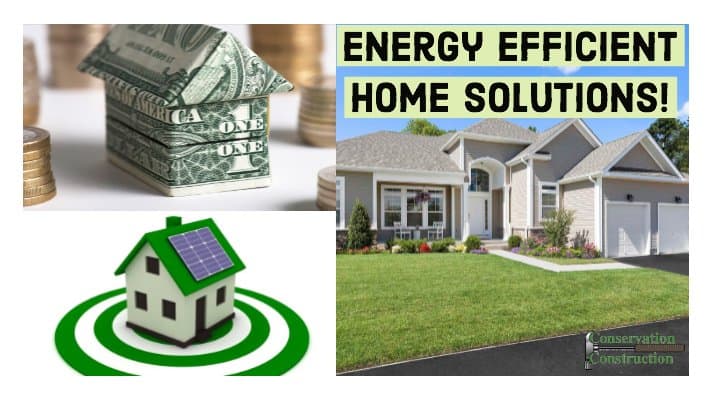
To truly help give you energy efficient solutions in your home we must first define exactly what “Energy Efficiency” is. There are several definitions on the web but one that sums them all up perfectly is this definition;
A device or building that is energy-efficient uses relatively little energy to provide the power it needs.
This ultimately means that energy efficiency is doing more with less: that is, squeezing as much useful power out of as little energy as possible, and not letting any go to waste. In home applications this begs the question, is your furnace or air conditioner heating and cooling optimally? Are your energy bills skyrocketing due to unseen forces like energy escaping through the cracks?
Think of our house as a complete energy efficient unit. When you first bought the house the windows, doors and siding were all working with the house to help it perform at a top-notch level. Over time however, each of these same components may wear down. However it is still critical that all of these devices work at this same optimal level to ensure energy efficiency. If one of these components is not functioning properly your ratio of functional home energy efficiency to energy loss will go down over time until it’s basically nonexistent.
You want your home as a hole to save energy and money not other way around. So let’s get into the ultimate solution for more energy efficient home.
Try to do a home energy audit. Either do this audit yourself or hire a professional to do one for you!
Check for air leaks in your house. These may be by windows or doors where the house has settled and caused gaps. To the best of your ability try to seal these leaks so that air from inside is not escaping outward or vice-versa.
Auditors will typically check the insulation in the house too. Heat loss through the ceiling and walls in your home could be very large if the insulation levels are less than the recommended minimum. To prove my point a friend of mine had an exponentially high energy bill. To combat this, he added three layers of insulation to his attic. His energy bill went down so much Xcel Energy changed out his meter three times to make sure the meter wasn’t malfunctioning. That’s so much energy savings the energy company will get mad!
Inspect your heating and cooling equipment to make sure they are performing well and not constantly running for no reason. Another friend of mine has a neighbor who’s air conditioner is running 24/7 365 in the summertime. He even offered to have the air conditioning unit fixed for them and they refused even when it was clear the unit was leaking. Don’t spend extra money running things all the time when they are not performing optimally. Inspect every season to make sure you’re getting the most bang for your buck.
I would say don’t worry as much about lighting as the other things in the house. A typical light bulb only uses 13-15 watts of energy. A light bulb running for 5 hours only uses about 14 watts which equates to 10 cents. Whereas a gap as big as a quarter can cause 15% of the energy loss of your entire home. Which one is more important here? We’d say the gap.
After you inspect these things you can make a whole house plan. Change out your windows and doors slowly if you must, or repair gaps as they become more of a problem. Once you work on things slowly, after a while it will add up to way more energy efficiency and a better functioning house as a whole.
We hope these energy saving tips have helped you understand where all your energy is going.
In conclusion, a little bit of work goes a long way in helping your energy savings. And, wink wink, we sell energy efficient windows, siding and doors. If you ever want a free estimate look no further than Conservation Construction.